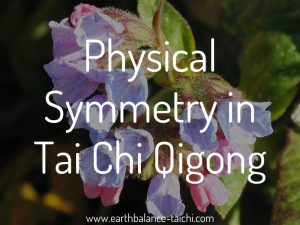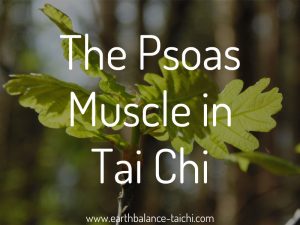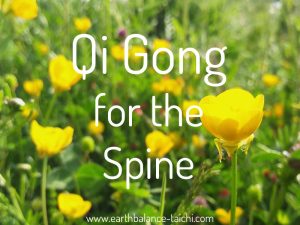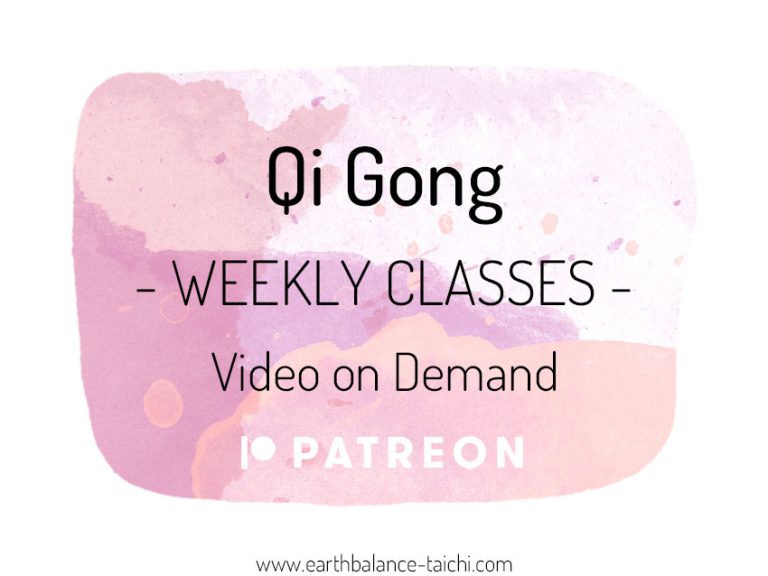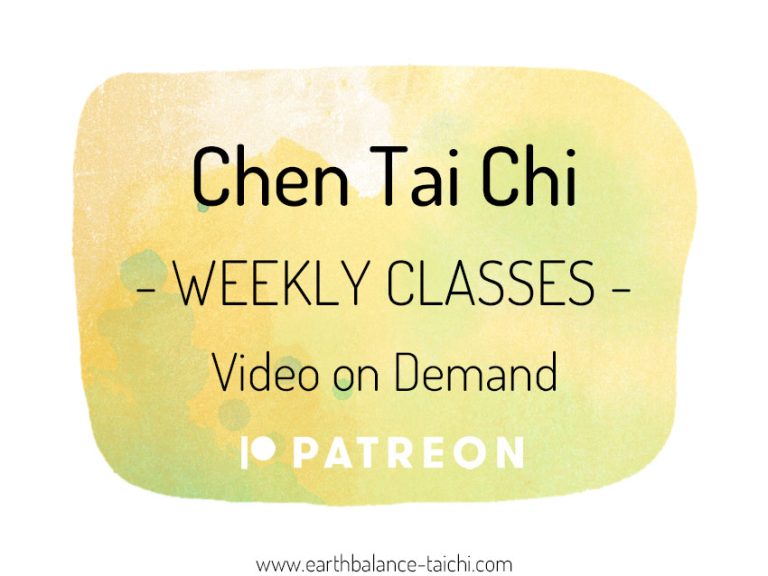Cross Lateral Movements
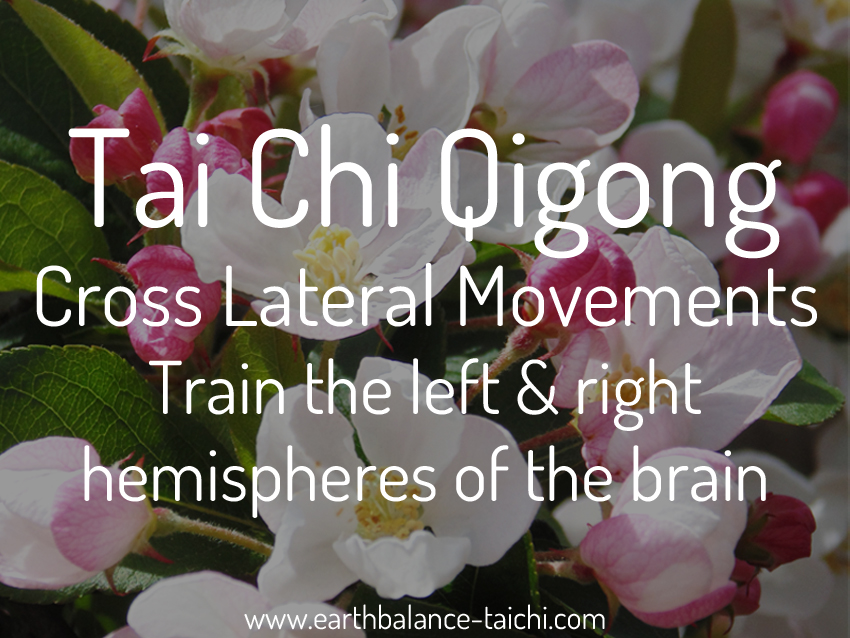
Cross Lateral Movements
Connecting Left and Right Brain Hemispheres
The Power of Natural Movements
For fully functioning physical movements and motor control the whole brain must work in a co-ordinated way. There are 6 patterns of total body connectivity; breathing, core, spine, upper & lower body, body half and cross lateral. This article looks at cross lateral connectivity in Tai Chi and Qigong movements.
Cross Lateral Movements
The body has a vertical axis called the centre line, from the feet, through the centre of the body and up to the crown on the head, with the arms and legs either side of the centre line. When your hand(s) or feet reach or move across the centre line, this is cross lateral movement. It could be a side ways, diagonal or circular movement across the centre line.
When one limb performs a different or asymmetrical movement simultaneously to the other limbs moving differently, this is also a cross lateral movement.
A cross lateral movement is an aspect of the skills that form smooth flowing coordination, hand eye coordination and graceful whole body movements. Without developing or maintaining cross lateral movements, this may present physically as clumsy, wooden and awkward movements.
Baby Movements
Once a baby has progressed from crawling on their stomachs to crawling with opposing limbs that are synchronised and coordinated e.g. the right arm moves forwards with the left leg, this is cross lateral movement. This is also known as a primal movement. For adults this can be likened to walking, Nordic walking, running, cross trainer exercises etc. Over the years as we grow up and become adults, some of us may develop an unnatural and sedentary lifestyle, resulting in the loss of ability to perform primal movements.
Cross Lateral Brain Connectivity
Cross lateral movements train the left and right hemispheres of the brain simultaneously. Each side of the brain is responsible for the other side of the body in movement e.g. left hand movements are controlled by the right side of the brain. The left brain is associated with thinking, cognition and familiar physical movements and the right brain is associated with feeling, body awareness, creativity and learning new movements. By coordinating cross lateral movements in the physical body, this develops equal function and connections between the two hemispheres.
The connections between the two sides of the brain are called neural pathways which electrical impulses flow through. These neural pathways atrophy like muscles when not used. Which means the ability to perform cross lateral movements can fade and disappear over time. It takes time, awareness and effort to re-build atrophied neural pathways, for your physical movements to once again become familiar, relaxed, smooth, graceful and co-ordinated. For optimum brain and physical function it is important to keep the neural pathways firing between both hemispheres.
Physical coordination = cognitive coordination.
Cross lateral movements cannot be learnt intellectually, they have to be practised through physical experience. The ability to perform them has to be trained into the body through repetition and a gradual building up of muscle memory. Ideally this is done through focused training sessions and then taken through into habitual movements in daily life.
Cross lateral connectivity also applies to asymmetrical physical movements. These are movements where the limbs are performing different movements at the same time. This could be the legs, or arms, or three limbs, or four limbs simultaneously moving differently in shape, motion and pace to the other. Think of patting your head and rubbing your tummy with your palms or whole body integrated movements like Tai Chi, Qigong, yoga and Pilates which also co-ordinate breath work with the movements.
Habitual Postures and Movement
In your daily life, without awareness you move physically through a routine of postures and movements that have become habit. If you are sedentary or work at a desk all day, your body and posture gets used to that routine and thinks it's normal and healthy. In the short term you are unlikely to notice any ill effects. Over time as the body degrades and the cross lateral connectivity fades in the brain, you may become clumsy, you may think you have two left feet, feel uncoordinated and awkward in your movements. You may develop balance and stability issues, or begin to lack body awareness and body sensitivity to know where you are in space (proprioception). The longer this continues the more likely you are to start stumbling and fall. Cross lateral movements are part of fall prevention strategies to keep the body moving smoothly with awareness. Ask yourself what movements do you do in your daily routine that help foster cross lateral connectivity?
In Taoist and yoga practices, there are breathing techniques that single out breathing through one nostril at a time and alternating inhales and exhales through different nostrils. This can be done by placing a finger over the nose to close one side, or by focusing the mind on one nostril at a time. This helps foster cross lateral connectivity.
Tai Chi and Qigong
These practices integrate the whole body by combining wide ranges of motion, choreographed movements and diaphragmatic breathing. It is common for new beginner students to be overwhelmed with the disconnection in their bodies as they learn the movements and begin to fire up atrophied neural pathways. There are many aspects to become aware of in your practice.
- Aligning the body in a healthy way whilst performing the movements. To ensure that the weight of the body does not get stuck in the shoulders, lower back or knees. This requires the development of body awareness through self and teacher led physical adjustments.
- Physical choreography, from feet angles on the ground, to palm positions, limb positions and body shape. Learning the key postures statically within each flowing movement helps a student knit the layers together towards accuracy. This requires left brain thinking, for cognitive memory recall, and then training towards innate muscle memory.
- Continuity in movement, which is similar to how front and rear bicycle gears work together. One arm may be moving in a large trajectory across the body, whilst the other arm is performing a smaller more contained trajectory towards the opposite side that is much slower and more subtle. Both arms are moving simultaneously and continually, before transitioning into a new movement. The lower body may be weight shifting from side to side, the waist may be rotating, the hips may be raising up and lowering down into a squat, and the legs may also be stepping, lifting upwards or kicking outwards. Being able to co-ordinate fast and big with slow and small needs breaking down into smaller steps to be able focus and practice before joining the parts together into one flowing graceful move. This is an effective way to train cross lateral brain connectivity.
- Body mechanics, layering the principles of Tai Chi that help develop a resilient physical structure to absorb, redirect and generate strength or power from, from a martial art perspective.
- Co-ordinating the movements with breath work.
- For intermediate Tai Chi students, they begin to add in connective tissue spirals into the limbs and torso, through both intention and small movements, which adds another layer of complexity. Imagine a spiralling quality in each leg, circling in different directions, whilst weight shifting, rotating the waist and spiralling the arms. This is not for new beginners as it is too much too soon. These types of body mechanics are built up slowly over time, which helps regularly establish and maintain the neural pathways of both brain hemispheres.
Learning a complex movement practice if not managed effectively by a teacher can be frustrating and confusing for new students. Managing expectations and helping students understand why their bodies cannot instantly move like their teacher is important. Passing on information about body connectivity, body awareness and kinaesthetic sensitivity is important so students can understand their limitations and know how to progress. Breaking movements down into digestible parts is helpful to the learning process, as over time the layers can be combined and built upon. It takes patience, hard work, humbleness, effort, determination, a willingness to learn, and many hours of self led exploration and practice for movements to become smooth, connected and graceful. Tai Chi and Qigong are life long arts.
My examples here are to demonstrate how complex Tai Chi can be, depending on what your goals are. Leaning into the mental and physical challenges you face when training Tai Chi helps develop cross lateral brain connectivity and optimum physical function. Moving slowly and deliberately with whole body awareness trains the ability of whole body connectivity. It's worth every moment of effort. Your brain will love you for it, your neural pathways will rejoice in their smoothness and longevity.
